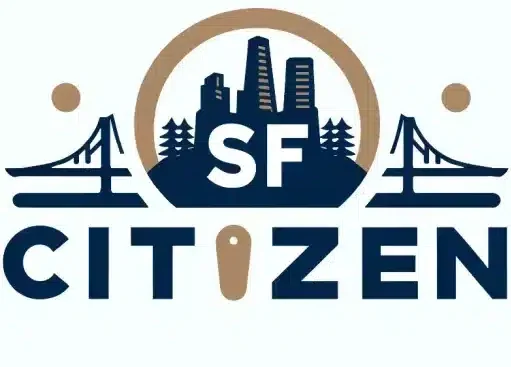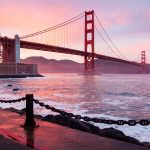The Castro, a vibrant neighborhood in San Francisco, is home to one of the largest LGBTQ+ communities in the United States. This iconic district has played a pivotal role in the fight for LGBTQ+ rights and has become a symbol of pride, resilience, and diversity.
In This Article
Key Points
- The Castro evolved from a quiet residential area to a bustling LGBTQ+ hub in the 1960s and 1970s.
- Key cultural and historical landmarks, such as the Castro Theatre and Harvey Milk Plaza, define the neighborhood’s identity.
- The Castro is known for its lively community events, thriving local businesses, and vibrant nightlife.
Historical Overview
The Castro’s transformation began in the 1960s when members of the LGBTQ+ community started settling in the area, attracted by affordable housing and a growing sense of community. The neighborhood gained national attention in the 1970s when Harvey Milk, the first openly gay elected official in California, opened his camera shop on Castro Street and became a prominent activist for LGBTQ+ rights.
Cultural Significance
The Castro has been at the forefront of the global LGBTQ+ movement, with events like the annual San Francisco Pride Parade and the creation of the Rainbow Flag, which has become an international symbol of LGBTQ+ pride. The neighborhood has also been a haven for LGBTQ+ individuals seeking acceptance and support, particularly during the AIDS crisis in the 1980s and 1990s.
Architectural Highlights
The Castro is known for its charming Victorian homes, many of which have been beautifully restored and painted in vibrant colors. The Castro Theatre, a historic movie palace built in 1922, is another architectural gem that serves as a beloved community gathering space and hosts numerous film festivals and events throughout the year.
Community and Lifestyle
The Castro is a tight-knit community where residents and visitors alike can experience a strong sense of belonging and pride. The neighborhood is home to a diverse array of local businesses, including LGBTQ+-owned bookstores, cafes, bars, and restaurants. Community events, such as the Castro Street Fair and the Pink Saturday party, celebrate the neighborhood’s unique culture and history.
Tourism and Attractions
Visitors to The Castro can explore a variety of historical and cultural attractions, such as:
- Harvey Milk Plaza, which honors the life and legacy of the pioneering gay rights activist
- The Rainbow Honor Walk, a series of plaques embedded in the sidewalk celebrating notable LGBTQ+ individuals
- The GLBT Historical Society Museum, which showcases the history of the LGBTQ+ community in San Francisco and beyond
Economic Impact
The Castro’s thriving business district and popularity as a tourist destination have made it an important contributor to San Francisco’s economy. The neighborhood’s unique character and LGBTQ+-friendly atmosphere have also made it a desirable location for real estate, with many people seeking to live and work in the area.
Challenges and Future Outlook
Like many neighborhoods in San Francisco, The Castro faces challenges related to gentrification, rising housing costs, and the need to balance economic growth with preserving its distinct identity. However, the community remains committed to maintaining The Castro as a welcoming and inclusive space for LGBTQ+ individuals and their allies, ensuring that its legacy of activism and pride will continue for generations to come.
FAQ
What are some must-visit places in The Castro for first-time visitors?
First-time visitors to The Castro should check out the Castro Theatre, Harvey Milk Plaza, and the Rainbow Honor Walk. The neighborhood also offers a variety of LGBTQ+-owned businesses, including unique shops, cafes, and bars.
How does the community in The Castro celebrate its LGBTQ+ culture and history?
The Castro celebrates its LGBTQ+ culture and history through various events, such as the San Francisco Pride Parade, the Castro Street Fair, and the Pink Saturday party. The neighborhood also features several museums and historical sites that showcase the community’s struggles and triumphs.
What are the major challenges facing The Castro today?
The Castro, like many San Francisco neighborhoods, is grappling with issues related to gentrification, rising housing costs, and the need to balance economic development with preserving its unique character and LGBTQ+-friendly atmosphere.
How has The Castro influenced the global LGBTQ+ rights movement?
The Castro has been a trailblazer in the fight for LGBTQ+ rights, with activists like Harvey Milk leading the charge for equality and acceptance. The neighborhood has also been a symbol of pride and resilience, particularly during the AIDS crisis, and has inspired LGBTQ+ communities around the world.
What are the historical landmarks in The Castro?
Some of the most notable historical landmarks in The Castro include the Castro Theatre, Harvey Milk Plaza, and the site of Harvey Milk’s former camera shop on Castro Street. The neighborhood also features several murals and memorials that pay tribute to the LGBTQ+ community’s history and struggles.

